
© Bosie Vincent. (Click image for larger version)
Vincent Dance Theatre
Virgin Territory Film Installation
★★★★✰
Margate, Turner Contemporary
12 March 2019
www.vincentdt.com
www.turnercontemporary.org
When I reviewed Charlotte Vincent’s Virgin Territory at The Place in 2016, I wanted there to be some follow up. It seemed too important a show to just end, with its hard hitting message about what society is doing to teenage girls. And sure enough, here it is – a film installation which I see in the Margate, Ramsgate and Broadstairs’ POW (Power of Women) festival commemorating International Women’s Day. The festival with its rich programme of arts’ practice by women and girls is a fitting setting for Virgin Territory and as POW programme director Jan Ryan tells me the installation is a vital contribution at POW.
Virgin Territory, installed in an intimate gallery space at the splendid Turner Contemporary in Margate allows people to engage with Virgin Territory’s content more directly and up close. Vincent Dance Theatre’s visceral and timely response to how social media is wrecking our children, hypersexualising them and stealing their childhood co-opts the very technology that it warns us about. In the hour-long film installation by Bosie Vincent we see frequent images of the dancers, four adults and four young teenagers (from the original cast) are caught on their phones, taking selfies, photographing their victims or stalking them on-line. Cinematography, dance, performance and testimonies from parents and teenagers seamlessly spill out across the four screens in a continuous interplay of riveting visual material which is both poetically abstract and grittily real; it shocks, disturbs and amazes in its cinematic beauty and outstanding performances by both teens and adults. Totally convincing, without being over-theatrical, the younger cast members handle difficult material with an unphased commitment.
The architecture of the installation allows for a fluid viewing experience – the screens frame the space, positioned opposite each other and as you walk between them you can choose which images from the film you want to watch. Chairs at one end of the room invite you to sit with other viewers like an audience at a live show but of course you can leave whenever you want. Underneath the screens nestle boxes and baskets brimming over with costumes, wigs, shoes and other performance paraphernalia. When the film installation becomes too uncomfortable, these objects are reassuring things to look at. Piles of dead leaves sit around the space as well – linking themes of earth and countryside to locations where sections of the film installation were shot. It feels like walking into a theatre archive, or onto the stage post-show encountering traces of performance that linger and objects that remain.
There’s also a separate room, another smaller gallery where you can sit and listen to music, carry out restorative tasks such as planting seeds in pots or watch the epilogue – a shorter film of the company digging and planting on a hilltop. This zone provides a much-needed reflective space and an escape from the main film installation’s density; there are also leaflets scattered around with contacts for self-help groups and campaigning organisations. As I watch this utopian scene in which adults and children interact through healthy, earthy activities, I’m deeply moved as it suggests a place in which people can be real, outside the fake, virtual world of digital technology. The metaphor of earth as grounding, nurturing and a place to which one can return is often used by Vincent in her work and it’s a powerful one.
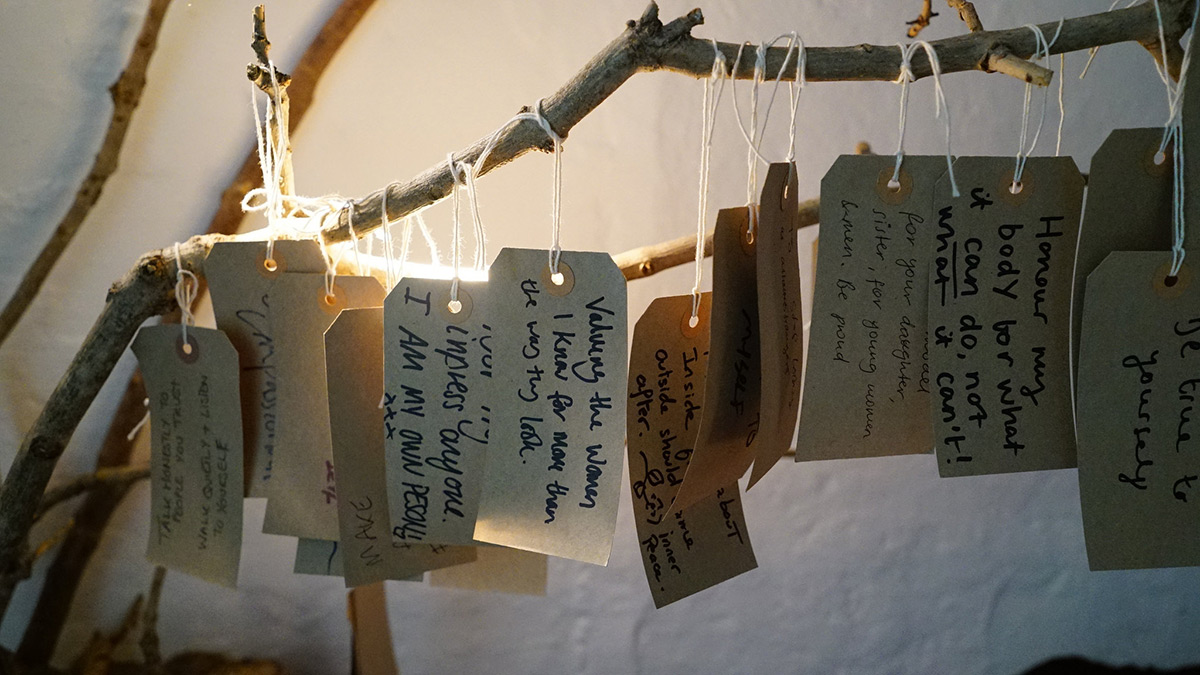
© Bosie Vincent. (Click image for larger version)
The already episodic nature of the live performance meant that it translated seamlessly into the fragmented language of film installation and the movement content, which is predominantly close partnering, worked as well. Just as the four separate films running concurrently across multiple screens provide many more optical choices for the audience so it enables multiple possibilities and contexts for intensifying scenarios from the original performance. Do I engage with the predator (Janusz Orlik) who stalks a girl (Maia Faulkner) on his screen, watching her every move, turned on by her fear? Or do I embody the vulnerable young teenager looking around anxiously in an empty class room or street, not knowing what she’s got herself into, by allowing a stranger to follow her online.
Sections are added on to the existing material by camera or cut from it; images are made more forceful through the layering of footage. For example the collision section in which adults and children run towards each other at speed across the studio, is extended in the film installation to display the exhilarating partnering. Adults and teenagers take it in turns to initiate the fall of their partners and inspite of their different ages and heights, they share power and responsibility.
Filming in different locations, like woods, village greens, edgy urban streets, parks, underpasses or car parks extend the visual and narrative options as do close-ups, edits, sudden cuts, blurring and fancy effects. Location also enables certain scenes to work better on film such as the medieval ‘porn scenes’ shot in a country garden in which Antonia Grove and Janusz Orlik perform mechanical, sexual acts to madrigals, wearing period costume; or when the children and adults dance together innocently on an idyllic village green. Likewise, the frequent cutaways to Grove in blonde wig, heels and short dress meditatively posing and posturing are poignantly troubling due to their dream like frequency and their framing by unlikely environments – a railway bridge, or a graffiti-walled parking lot.
Close-ups and juxtaposition of imagery on the screens make the film installation more intense and persistent than the live performance. In a duet where Robert Clark takes advantage of a tipsy Valerie Ebuwa the graphic physical struggle, filmed in a park is much more suggestive of a rape. While a trio in which Clark and Orlik physically harass Grove also becomes much more sinister set in the location of a car park. The testimonies of parents and girls heard as voice-overs in the live performance reappear in the film as single shots of Grove and Clarke wearing headphones and reading them out. This juxtaposition of a male and female adult talking-head speaking the words of victimised girls is very affective.
An intense duet by Orlik and Elysia Natale becomes unbearably disturbing through close camera work. He rough handles her pushing her repeatedly to the ground, her fragility is exacerbated by her pink, frilly ball gown, red lipstick and frightened, childish face. While less explicit than the over-sexualised images of the performers with balloon breasts and buttocks in another scene, its connotations are much worse.
Some scenes from the performance also disappear but re-appear in the installation as visual and aural traces, for example the section where the dancers imitate aggressive, barking dogs; here we see a powerful shot of Grove urgently herding the children down an underpass away from the noise of barking.
Both the live performance of Virgin Territory and the film installation each stand on their own as incredibly effective and potent entities. When I speak to Charlotte Vincent about the making of the film she talks about the advantages of touring the film installation in conjunction with the live performance. She stresses that the film is much more cost effective to tour that the live show and reaches larger audiences and can be shown in a variety of contexts such as schools, lecture theatres, galleries and theatres. As each scene can exist independently as a mini-narrative with provocative content, this enables the company to show short sections of the work in schools which don’t need trigger warnings and can inspire the basis of a workshop. She describes the delivery of live performance in conjunction with the film installation (and even online versions) as ‘layered’ repertoire which is Vincent Dance Theatre’s current mode of operation. Her more recent production about the crisis of boys and masculinity, Shut Down has also been given the same treatment as Virgin Territory – a film installation and a live performance.
Although intensive for the company this concept of layered repertoire makes absolute sense to me as it projects Vincent’s vitally important social messages to audiences way beyond the parameters of theatre and dance community.










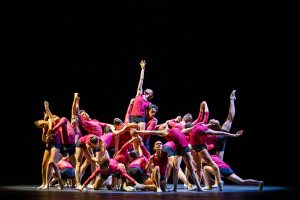
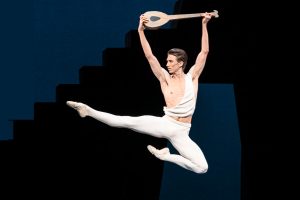

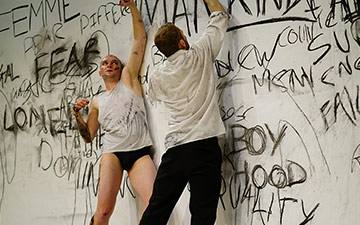
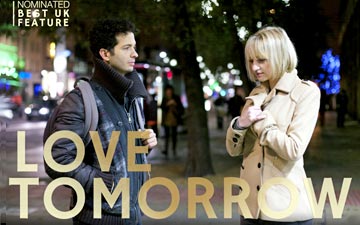
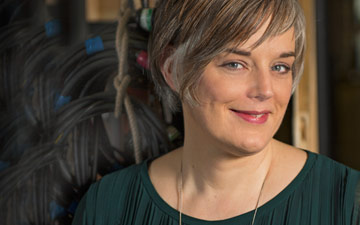
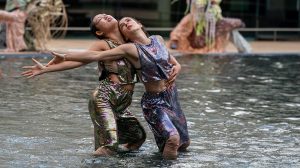
Thanks so much for this review Josephine. Great you could return to this work in its different form. If possible could you change ‘lives’ to ‘leaves’ and its Maia Faulkner in the scene with Janusz (not Millie). We always refer to the
Work as a film installation rather than ‘a film’ as its actually 4 completely seperate films running concurrently across multiple screens…just a thought. Thanks again! CV
The various corrections/observation are made/addressed. Apologies. Ed.